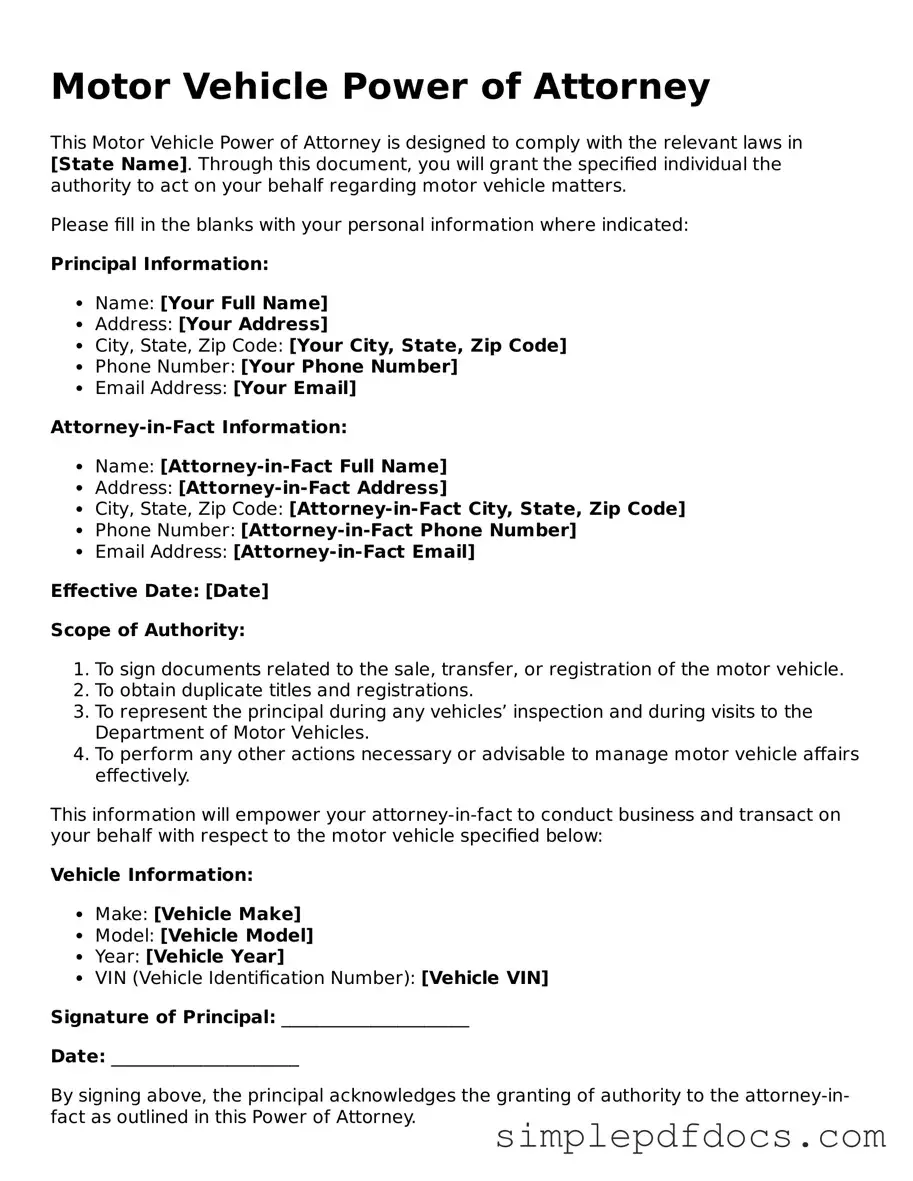Attorney-Approved Motor Vehicle Power of Attorney Form
The Motor Vehicle Power of Attorney form is a legal document that allows an individual to designate another person to act on their behalf in matters related to motor vehicle transactions. This form is particularly useful when the vehicle owner cannot be present to sign necessary documents, such as for the sale or transfer of a vehicle. By granting this authority, the vehicle owner ensures that their interests are represented and that transactions can proceed smoothly.
Get Document Here
